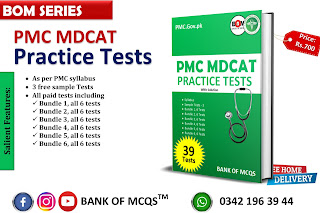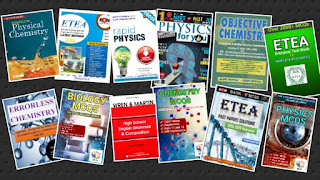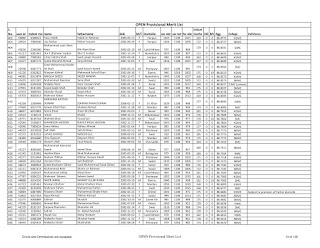Chap.16 Support and movement MCQs
|
1. |
|
|
|
2. |
A
connective tissue consisting of chondrocytes and type II collagen is: (a)
Bone (b) Blood (c)
Cartilage (d) All of
them |
C |
|
3. |
Epiglotis
is an example of cartilage: (a)
Hyaline (b) Elastic (c)
Fibro (d) None of
them |
B |
|
4. |
30%
matrix of a bone is composed of organic material, chiefly: (a)
Protein (b) Collagen (c)
Both of these (d) None of them |
|
|
5. |
70%
matrix of a bone is composed of inorganic salts, chiefly: (a)
Calcium Phosphate (b) Sodium (c)
Potassium (d) Bicarbonate |
A |
|
6. |
Initially
the bone is formed by: (a)
Osteocyte (b) Osteoclast (c)
Osteoblast (d) All of them |
C |
|
7. |
Demineralization
of bone resorption is carried by: (a)
Osteoclast (b) Osteoblast (c)
Osteocyte (d) Chondrocyte |
A |
|
8. |
bones
are fused with eachother in an adult. (a)
134 (b) 124 (c)
144 (d) 154 |
C |
|
9. |
Axial
skeleton of human consist of skull vertebral column and: (a)
Fore Arm (b) Pelvic
Girdle (c)
Pectoral Girdle (d) Ribs |
D |
|
10. |
Skull
of human is made up of bones: (a)
18 (b) 28 (c)
8 (d) 6 |
C |
|
11. |
Muscle
fibres are cylanderaced unbranch and with diameter of: (a)
10-80 m (b) 20-60 m (c)
10-100 m (d) 10-60m |
C |
|
12. |
Bones
are held together with each other, and at joints by: (a)
Nerves (b) Ligament (c)
Tendon (d) Smooth
Muscles |
B |
|
13. |
Coccyx
forms which part of vertebral column? (a)
First (b)
Middle (c)
Last (d)
None of them |
C |
|
14. |
Which
one of the following constitute the wrist of man? (a)
Tarsal (b)
Metatarsal (c)
Carpals (d)
Metacarpals |
C |
|
15. |
The
cranium in man consists of bones. (a)
6 (b) 7 (c)
8 (d) 9 |
C |
|
16. |
………
pairs of ribs form the rib cage in man (a)
10 (b) 12 (c)
13 (d) 11 |
B |
|
17. |
The
wrist of a man consist of: (a)
Carpels (b) Metacarpals (C)
Ischium (d) Scapula |
A |
|
18. |
Which
of these is a direct source of energy for muscle contraction? (a)
ATP (b)
Creatine Phosphate ©
Lactic Acid (d) Botha and b |
D |
|
19. |
Which of the following changes occur when skeletal
muscle contracts (a)
The A Band shorten (b)
The I Band shorten. (c)
The Z-Line slide farther apart (d)
The actin filament contract |
|
|
20. |
Thin filament in myofibrils consist of (a)
Actin, Tropomyosin. Troponin (b)
Z-Line (c)
Chloride ions (d)
Sarcomere |
A |
|
21. |
In
the mammalian skeleton, there is a distinct synovial joint between the (a)
Bones of the Cranium (b)
Humerus and lina (c)
Sacrum or ilium (d)
Sternum and Floating Ribs |
B |
|
22. |
Which of the following is a bone of axial
skeleton (a)
Ribs (b)
Shoulder Girdle (c)
Pelvis (d) Femur |
A |
|
23. |
Vertebral
column includes (a)
Sacrum (b)
Coccyx (c)
Cervical. Thoracic and Lumbar Vertebrae (d)
All of these |
D |
|
24. |
In
mammal, the no. of cervical vertebrae are (a)
No definite no (b)
7 (c)
11 (d)
Varies with the size of the neck |
B |
|
25. |
Brain
is protected by: (a)
Cranium (b) Skull (c)
Orbits (d) All of
these |
A |
|
26. |
Which
of the following causes muscle fatigue? (a)
CO (b)
Lactic acid accumulation (c)Fumaric
Acid (d)
Ethyl Alcohol |
B |
|
27. |
Cardiac muscles are: (a)
Voluntary (b) Involuntary (c)
Both of these (d) None of them |
B |
|
28. |
The
disorder in which bones are porous and thin but bone composition normal is: (a)
Osteomalacia (b) Osteoporosis (c)
Rickets (d) Arthritis |
B |
|
29. |
The organic portion of bone matrix is
important in providing all but: (A)Tensile
Strength. b) Hardness (c)
To Resist Stretch (d)
Flexibility |
D |
|
30. |
The
remodeling of bone is a function of: (a)
Chondrocytes and Osteocytes (b)
Osteoblasts and Osteoclasts (c)
Chondroblasts and Osteoclasts (d)
Osteoblasts and Osteocytes |
B |
|
31. |
In skeletal muscles, calcium facilities contraction
by binding to (a)
Tropomyosin (b) Troponin (c)
Actin (d) Myosin |
B |
|
32. |
Which
of the following statements concerning the role of Ca in the contraction of
skeletal muscle is correct? (a)
The mitochondria act as a store of Ca for the contractile process (b)
Ca entry across the plasma membrane is important in sustaining contraction of
skeletal muscle (c)
A rise in intracellular Ca allows actin to interact with myosin (d)
All of these |
C |
|
33. |
The
function of the T-tubules in muscle contraction is to: (a)
Make and Store Glycogen (b)
Releases Ca into the cell interior and then pick it up again (c)
Make the action potential deep into the muscle cells (d)
To hamper the nerve impulse |
C |
|
34. |
The
sites where the motor nerve impulse is transmitted from the nerve endings to
the skeletal muscle cell membranes are the (a)
Neuromuscular Junction (b)
Sarcomeres (c)
Myofilaments (d)
Z-dises |
A |
|
35. |
Myoglobin has a special function in muscle tissue (a)
It breaks down glycogen (b)
It is a contractile protein (c)
It holds a reserve supply of oxygen in the muscle (d)
None of them |
C |
|
36. |
V.
low levels of calcium in the body results in: (a)
Tetanus (b) Tetany (c)
Cramps (d) All of
these |
B |
|
37. |
Writer's
cramp first affects an individual by inhibiting their ability to: (a)
Speak (b) Write (c)
Walk (d) Move |
B |
|
38. |
Osteoclasts are: (a)
Mononucleated Cells (b)
Multinucleated Cells (c)
Without Nucle (d)
None of them |
B |
|
39. |
Cartilage
matrix consists of: (a)
Type I Collagen (b) Type II
Collagen (c)
Both types (d) No Collagen |
B |
|
40. |
Which
of the following is an unpaired bone? (a)
Parietal (b) Temporal (c)
Malleus (d) Mandible |
D |
|
41. |
40)
How many individual bones are present in an
adult human? (a)
350 bones (b) 206 bones (c)
650 bones (d) 126 bones |
B |
|
42. |
Bones
are held together by: (a)
Tendon (b) Ligament (c)
Both of these (d) None of these |
B |
|
43. |
Spondylosis is also known as: (a)
Sciatica (b) Sprain (c)
Spinal Osteoarthritis (d) Disc Slip |
C |
|
44. |
If the bone ends penetrate the skin and
forms a wound, the fracture is (a)
Simple Fracture (b)
Closed Fracture (c)
Compound Fracture (d)
All of these |
C |
|
45. |
Injury to a ligament is called: (a)
Joint Dislocation (b)
Sprain (c)
Sciatica (d)
Arthritis |
B |
|
46. |
Muscles
of the digestive system are: (a)
Striated Muscles (b)
Smooth Muscles (c)
Cardiac Muscles (d) Skeletal
Muscles |
B |
|
47. |
Region
of a myofibril between two successive Z-lines is called: (A)Sarcolemma. (b) Sarcomere (c)
Cross Bridge (d) T-Tubule |
B |
|
48. |
Sliding
filament hypothesis was proposed in: (a)
1930 (b) 1941 (c)
1954 (d) 1980 |
C |
|
49. |
When
the electrical impulses reaching a muscle fibre cease the sarcoplasmic
reticulum begins to re-accumulate the calcium ions by: (a)
Diffusion (b) Active
Transport (c)
Both of these (d) None of them |
B |
|
50. |
Cross
bridges are found on: (a)
Actin (b) Myosin (c)
Troponin (d) Tropomyosin |
B |
|
51. |
Bone
formation is called: (a)
Petrifaction (b) Haematoma (c)
Mineralization (d) Ossification |
C |
|
52. |
How many carperls forms human writst? (a)
5 (b) 8 (c)
14 (d) 20 |
B |








Comments
Post a Comment